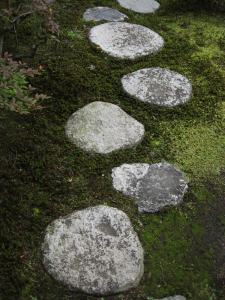 The Tea garden, or Roji is divided into two spaces: an outer garden and an inner garden connected by a series of stone paths. Gates and fences play an important role in dividing the two rooms to create the feeling of transition from one place to another.
The Tea garden, or Roji is divided into two spaces: an outer garden and an inner garden connected by a series of stone paths. Gates and fences play an important role in dividing the two rooms to create the feeling of transition from one place to another.
When designing the landscape for a Tea garden I start by looking at the architecture of the place, the bones and details, because I want to gracefully transition from outer to inner, from the street to the tea house; a transition from daily life to a space that is contemplative and feels connected to place.
It is not necessary to have a tea house or retreat space in your back yard, but the garden should feel like you’ve stepped onto a path that leads you through the countryside to a rustic hut or space designed for quiet contemplation and reflection.
The overall impression should be one of integrity, tranquility and beauty. There are a few elements that make this work.
-excerpt from A Tea Garden in Tivoli
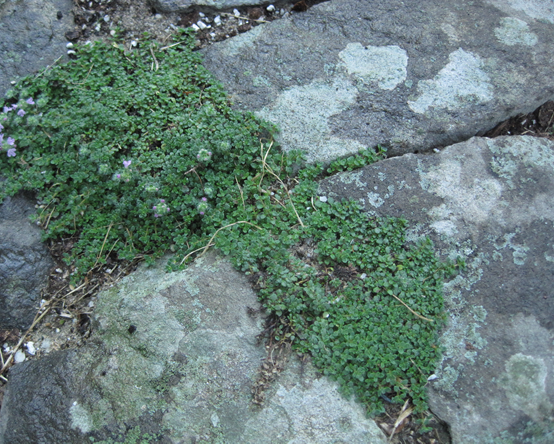
Creeping thyme grows in between the lichen covered stones
My mother, who is now 95 years old, lived in a renovated historic schoolhouse which was just sold. Before the sale I went over and hauled out car loads of lichen covered stones from the walls on her property. With them I built a cobble path to my backyard.
These stones not only remind me of my mother, but remind me too of the landscape around this county that was mostly a farming area. Stones heave in the winter into cleared fields and farmers would gather them and make walls to define property and keep their animals contained. You can see stone walls in forests where the new growth has grown up over fields no longer used.
I”ve started to grow creeping thyme in between the stones, and over the years they will spread and flourish.
One of the aspects of tea study is the appreciation for things that are now gone, a nostalgia, “a remembrance of things past”.
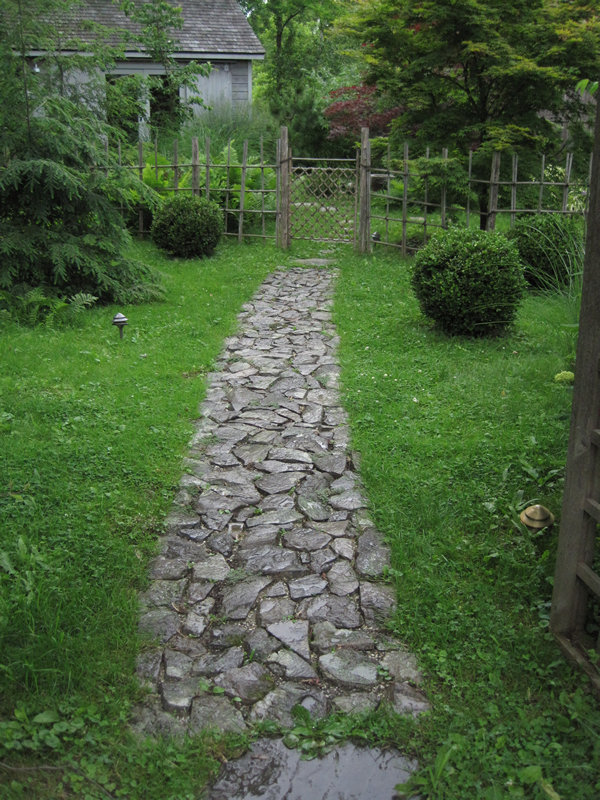
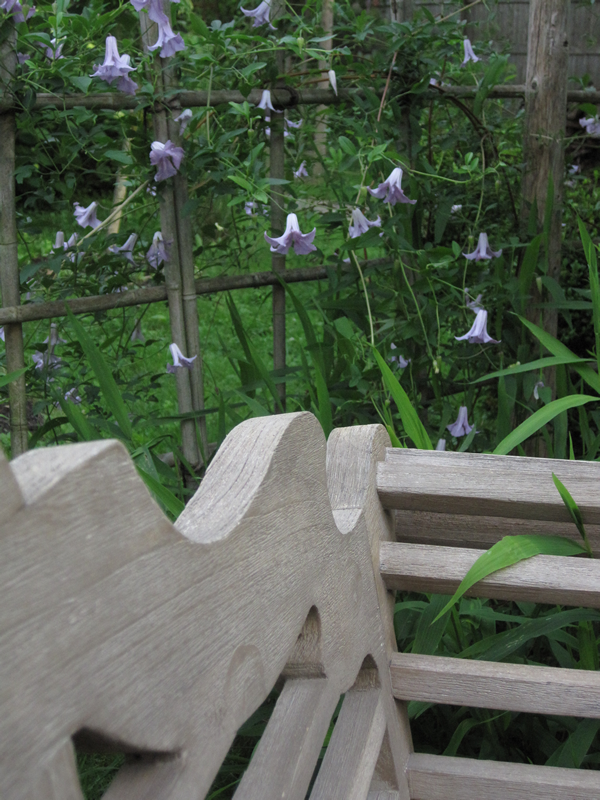
This bench is designed by the English architect Edwin Lutyens who was a colleague of the famous garden designer Gertrude Jekyll. They created the English County Garden style in the late 1800″s. The bench fits well with my farm house from the same era and shows that one can have elements in a tea garden that are not strictly Japanese.
There are two important structures or elements that define a
Tea garden. One is the waiting bench, the other is the arrangement of stones around a water basin, called a Tsukubai.
The guests follow a path to the bench. The host will come out of the tea house, and greet them by pouring fresh water into the basin. He then bows to the guests at the gate and returns to the tea room. The guests, one by one, will go to the water basin, rinse their hands and mouth and proceed into the tea room.
In Japan, the waiting bench is usually a covered structure but here in Tivoli I have chosen a bench that reflects the architecture of my house and gives the garden a natural feel rather than a strictly Japanese design.
Tea as an art form follows rules, but is also flexible and creative. I can design the elements of the garden such as the bench, water basin, fences, gates and paths to my own taste yet follow the fundamental principles.
The most important aspect of any tea garden is to create an experience of contemplation and harmony.
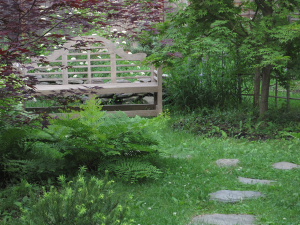
excerpt from A Tea Garden in Tivoli
 The Tea garden, or Roji is divided into two spaces: an outer garden and an inner garden connected by a series of stone paths. Gates and fences play an important role in dividing the two rooms to create the feeling of transition from one place to another.
The Tea garden, or Roji is divided into two spaces: an outer garden and an inner garden connected by a series of stone paths. Gates and fences play an important role in dividing the two rooms to create the feeling of transition from one place to another.










